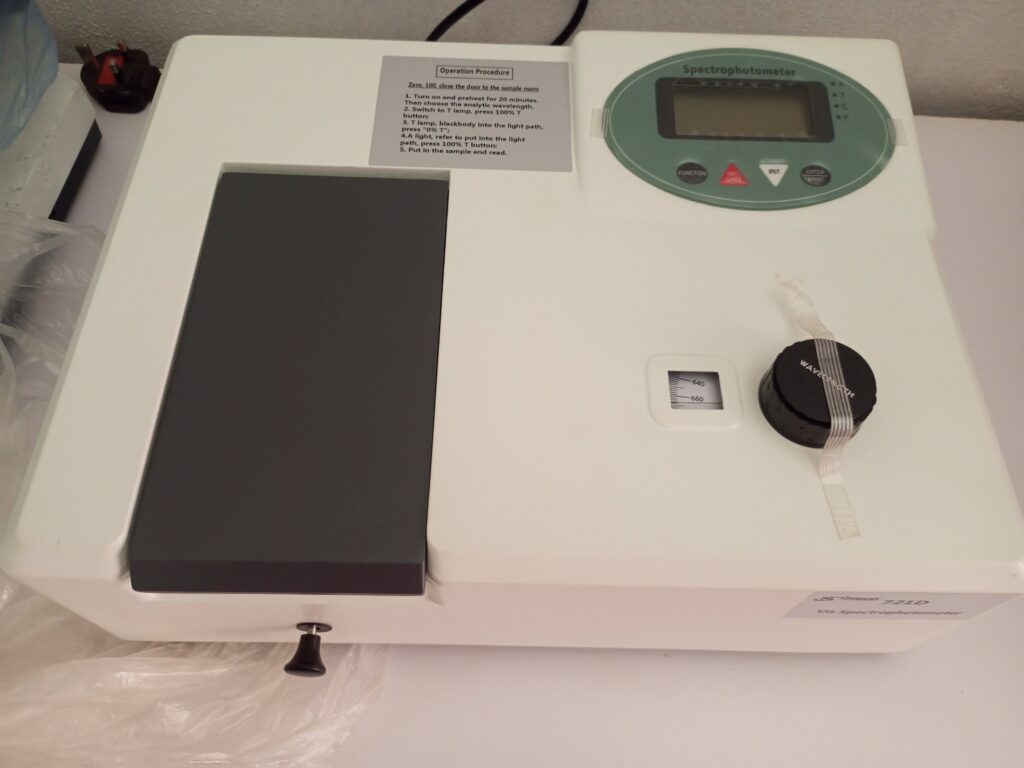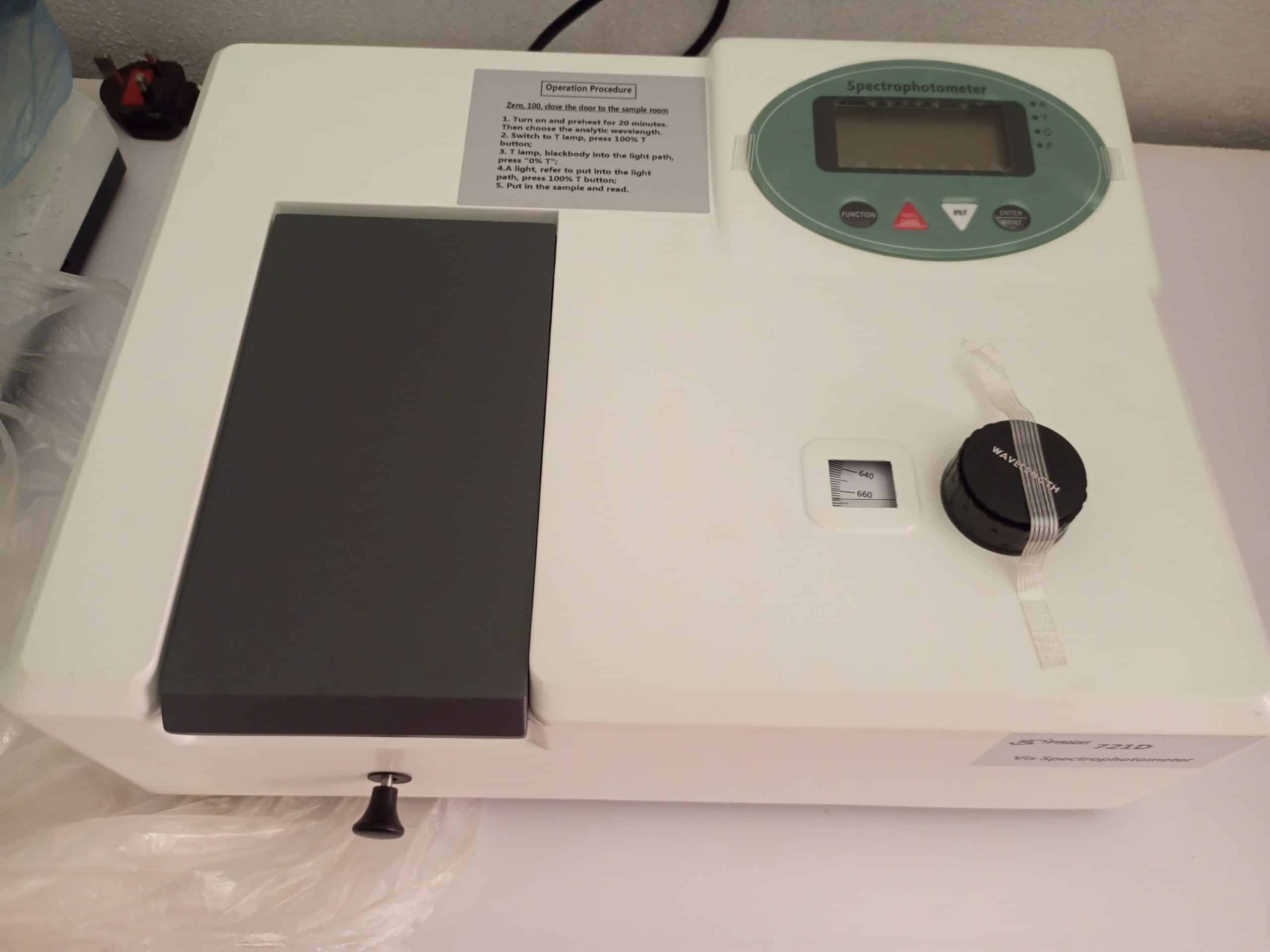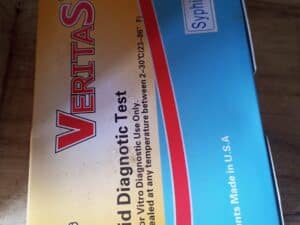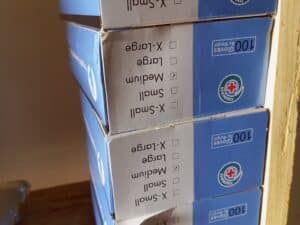Vis spectrophotometer
A visible spectrophotometer, also known as a UV-Vis spectrophotometer, is a scientific instrument used to measure the absorbance or transmittance of light in the visible range of the electromagnetic spectrum. It is commonly used in various fields such as chemistry, biochemistry, physics, and environmental science.
The working principle of a visible spectrophotometer is based on the Beer-Lambert law, which states that the absorbance of a sample is directly proportional to the concentration of the absorbing substance and the path length of the light through the sample.
Here’s a brief overview of how a visible spectrophotometer works:
1. Light Source: The instrument has a stable and broad-spectrum light source, typically a tungsten-halogen lamp or deuterium lamp, that emits light in the visible range (approximately 400 to 700 nanometers).
2. Monochromator: The emitted light passes through a monochromator, which is a device that separates the light into its individual wavelengths. This can be achieved using a prism or diffraction grating, allowing the selection of specific wavelengths of light.
3. Sample Compartment: The light then passes through the sample compartment, where the sample is placed. The sample may be a liquid, solid, or gas, depending on the application.
4. Detector: After passing through the sample, the light is detected by a photodetector, such as a photodiode or a photomultiplier tube. The detector converts the light intensity into an electrical signal.
5. Data Acquisition: The electrical signal from the detector is sent to a computer or data acquisition system for further processing. The instrument measures the intensity of light transmitted through the sample and calculates the absorbance or transmittance.
6. Calibration and Analysis: To determine the concentration of a particular substance in a sample, a calibration curve is typically prepared using known standard solutions. The absorbance of the standard solutions is measured, and a plot of concentration versus absorbance is created. By comparing the absorbance of an unknown sample to the calibration curve, the concentration can be determined.
Visible spectrophotometers are versatile instruments and are commonly used for a wide range of applications, including quantitative analysis, kinetics studies, DNA and protein analysis, colorimetry, and quality control in industries such as pharmaceuticals, environmental monitoring, and food and beverage.






Reviews
There are no reviews yet.